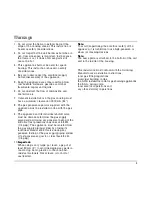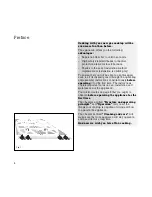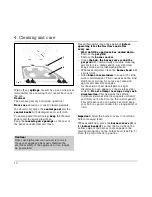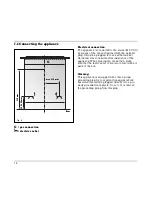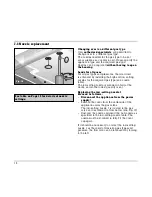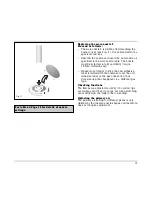
1. Do not allow the flame to extend beyond the
edge of the cooking utensil. This instruction is
based on safety considerations.
2. Do not forget that the unit becomes hot when in
use. Common sense is important. Just because
the flame is out, it does not mean parts still
cannot be hot.
3. This appliance shall not be used for space
heating. This instruction is based on safety
considerations.
4. Be sure to disconnect the electrical supply
before disassembly of the appliance.
5. Keep the appliance area clear and free from
combustible materials, gasoline and other
flammable vapors and liquids.
6. Do not obstruct the flow of combustion and
ventilation air.
7. Cabinets installed above the gas cooktop must
have a minimum clearance of 600 mm (24”).
8. The gas pressure regulator supplied with the
appliance must be installed in line with the gas
pipe.
9. The appliance and its individual shutoff valve
must be disconnected from the gas supply
piping system during any pressure testing of the
system at test pressures in excess of 3.5 kPa
(1/2 psig). The appliance must be isolated from
the gas supply piping system by closing its
individual manual shutoff valve during any
pressure testing of the gas supply piping system
at test pressures equal to or less than 3.5 kPa
(1/2 psig).
10.
Important:
When using a very large pot, leave a gap of at
least 50 mm (2") to avoid damaging any parts in
counter top wood, plastic or other non-heat-
resistant materials. Never leave oil or hot fat
unattended.
Note:
To avoid jeopardising the electrical safety of the
appliance, it is forbidden to use high-pressure or
steam jet cleaning devices.
Note:
The name plate is attached to the bottom of the unit
and to the inside of the housing.
This installation must conform with the following:
Manufacturer’s installation instructions,
local gas fitting regulations,
municipal building codes,
the A.G.A installation code for gas burning appliances,
the S.A.A. wiring code,
local electric regulations and
any other statutory regulations.
Warnings
3



